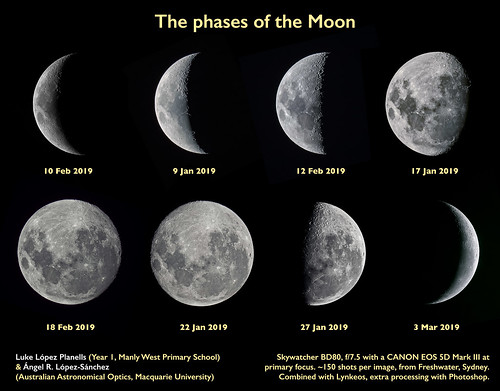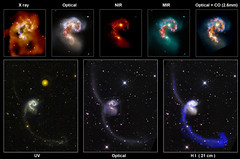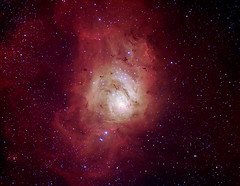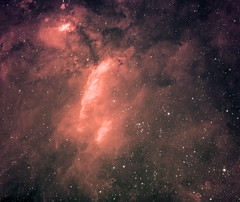This image combines 50 x 1″ exposures, ISO 800, obtained with my CANON 5D Mark III attached at primary focus of my Skywatcher Black Diamond 80mm f600mm (F/7.5) during the Total Lunar Eclipse on Wednesday 26 May 2021, between 9:00pm and 9:04pm, Sydney local time.
The frames were manually aligned with Photoshop, then extracted as new frames to Lynkeos, that did the fine alignment. Drizzling x2 was also used. Then the combined image was taken to Photoshop, where the colour, highlights/shadows, and contrast were tuned. This got only the image of the eclipsed moon.
Additionally, I combined the full 266 x 1″ images I took during totality using Siril to get the stellar background.
They two combined frames (eclipsed moon + stars) were combined with Photoshop with a bit of extra tuning to get a nice background.
The image taken at 9:03pm was used as reference for the alignment.
All the data were taken during the 4 hours “ONLINE” event “Conversaciones astronómicas bajo la luna eclipsada” that I organised with the “Red Andaluza de Astronomía” (RAdA), “Agrupación Astronómica de Córdoba” (AAC), “Asociación de Lengua y Cultura Española” (ALCE) de Australia and the “Spanish Researchers in Australia-Pacific” (SRAP-IEAP), that was followed by many schools in Spain.
I also want to thank Alicia Lozano (RAdA), Héctor Socas-Navarro (Instituto de Astrofísica de Canarias), María Ribes (Universidad de Alicante) and Alberto Aparici (Instituto de Física Corpuscular de Valencia) for the conversation they had during the event while I was taking this images.
Full resolution image in My Flickr.
Credit: Ángel R. López-Sánchez (Australian Astronomical Optics, Macquarie University).




















